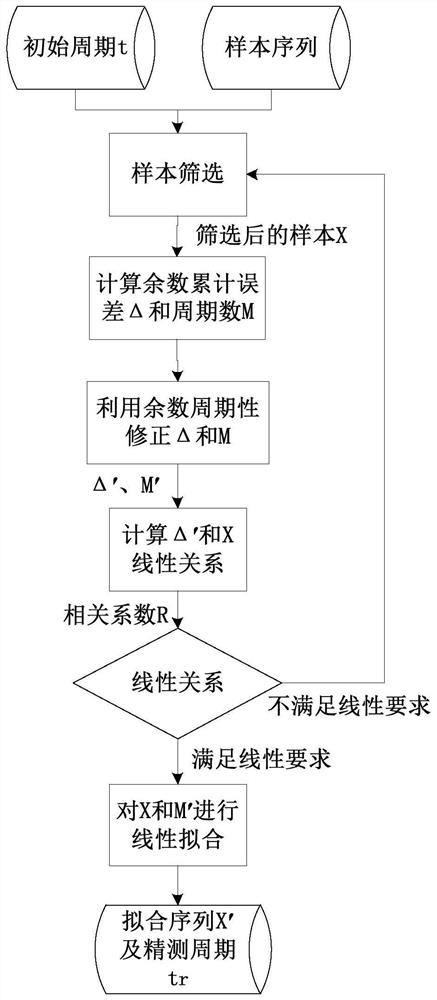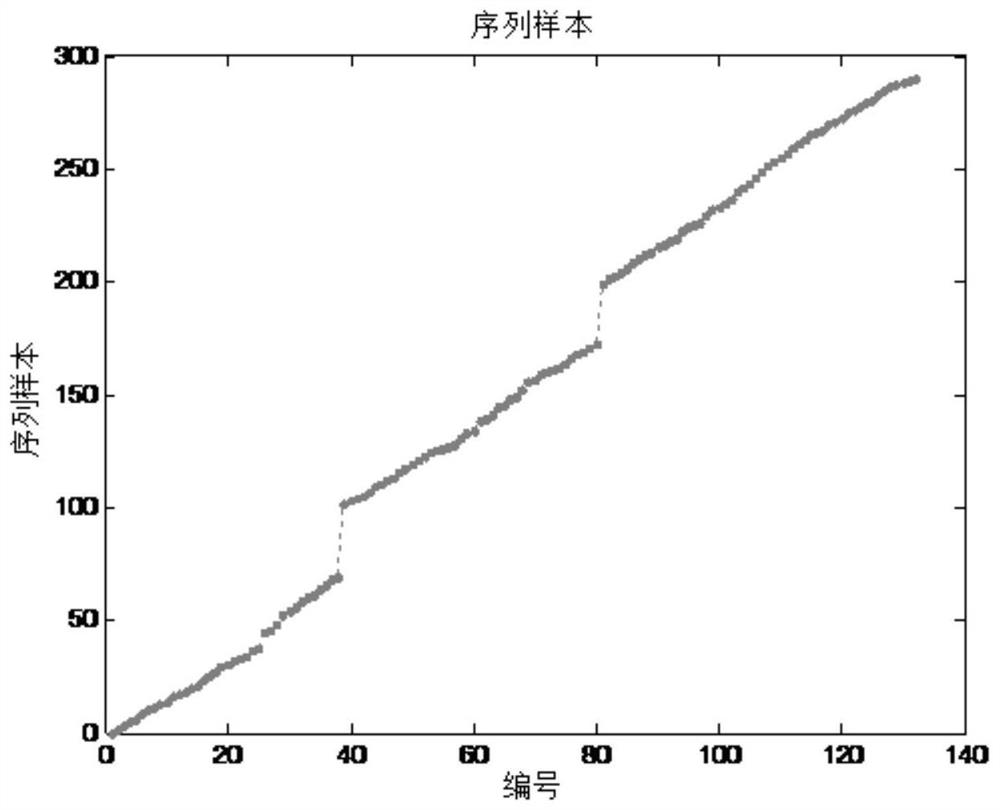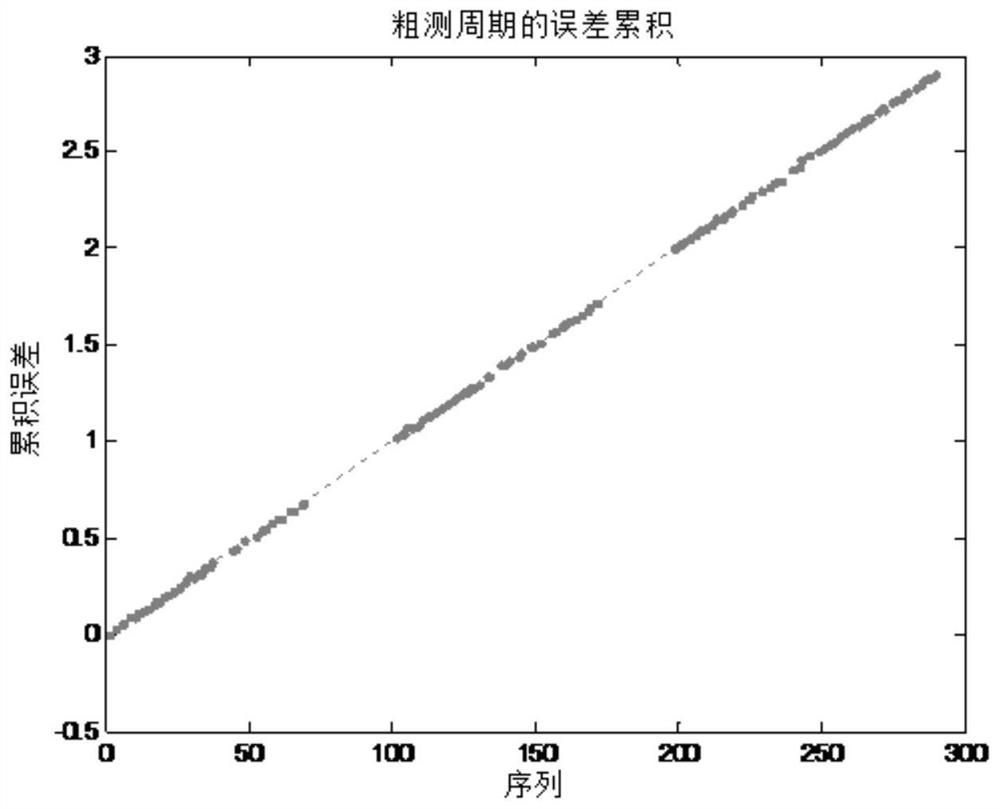A Method for Precise Estimation of Sample Period Based on Linear Regression and Remainder Period
A linear regression and precise estimation technology, applied in complex mathematical operations, design optimization/simulation, etc., can solve problems such as low accuracy of sequence cycle estimation, long-term accumulation of sequences, deviation in estimated cycle numbers, and low data utilization. Achieve the effects of increasing tolerance, reducing computational complexity, and improving computational accuracy
- Summary
- Abstract
- Description
- Claims
- Application Information
AI Technical Summary
Problems solved by technology
Method used
Image
Examples
Embodiment 1
[0044] like figure 1 As shown, this embodiment provides an accurate estimation method for the sample period based on linear regression and remainder period, including the following steps:
[0045] S1. Screen the given data to obtain a screened sample X, and the number of samples is n. Specifically, an ordered sample is obtained by arranging the initial sequence, and the error value and discrete value of the ordered sample are eliminated by using Euclidean distance to obtain a filtered sample X.
[0046] S2. Calculate the accumulated residual error Δ and the number of cycles M of the sample X according to the sample X and the initial period t, and perform linear correction on the accumulated residual error Δ and the number of cycles M. Due to the periodic change of the remainder of the sample X, each time a period of the remainder passes, the accumulated residual error Δ will appear nonlinear, so the accumulated residual error Δ and the number of cycles M are corrected based o...
Embodiment 2
[0065] This embodiment is on the basis of Embodiment 1:
[0066] In step S4 of Embodiment 1, this embodiment first calculates the linear relationship between the corrected number M' and the corrected residual accumulated error Δ' to obtain b 1 , and then calculate the linear relationship between the sample X and the corrected residual cumulative error Δ' to obtain b 2 , so as to obtain the precise measurement period t r :
[0067] t r =b 1 / b 2 .
Embodiment 3
[0069] This embodiment is on the basis of Embodiment 1:
[0070] In order to prove the validity of the method for accurately estimating the sample period provided in Example 1, a numerical simulation test was carried out in this example, according to figure 1 The processing flow shown is processed.
[0071] The simulation uses a sample sequence with a period of 1, and adds a certain amount of noise. figure 2 is the sparse sequence sample distribution in , image 3 is the error accumulation of the samples obtained on the basis of the sequence with the existing coarse period, Figure 4 is the error accumulation of the samples obtained based on the calculated fine-measuring period. figure 2 The middle abscissa shows the serial number of the sample, and the ordinate is the sequence sample; image 3 , 4 The middle abscissa is the sequence sample, and the ordinate is the corresponding accumulated error.
[0072] like figure 2 As shown, the distribution of samples is sparse...
PUM
 Login to View More
Login to View More Abstract
Description
Claims
Application Information
 Login to View More
Login to View More - R&D
- Intellectual Property
- Life Sciences
- Materials
- Tech Scout
- Unparalleled Data Quality
- Higher Quality Content
- 60% Fewer Hallucinations
Browse by: Latest US Patents, China's latest patents, Technical Efficacy Thesaurus, Application Domain, Technology Topic, Popular Technical Reports.
© 2025 PatSnap. All rights reserved.Legal|Privacy policy|Modern Slavery Act Transparency Statement|Sitemap|About US| Contact US: help@patsnap.com



